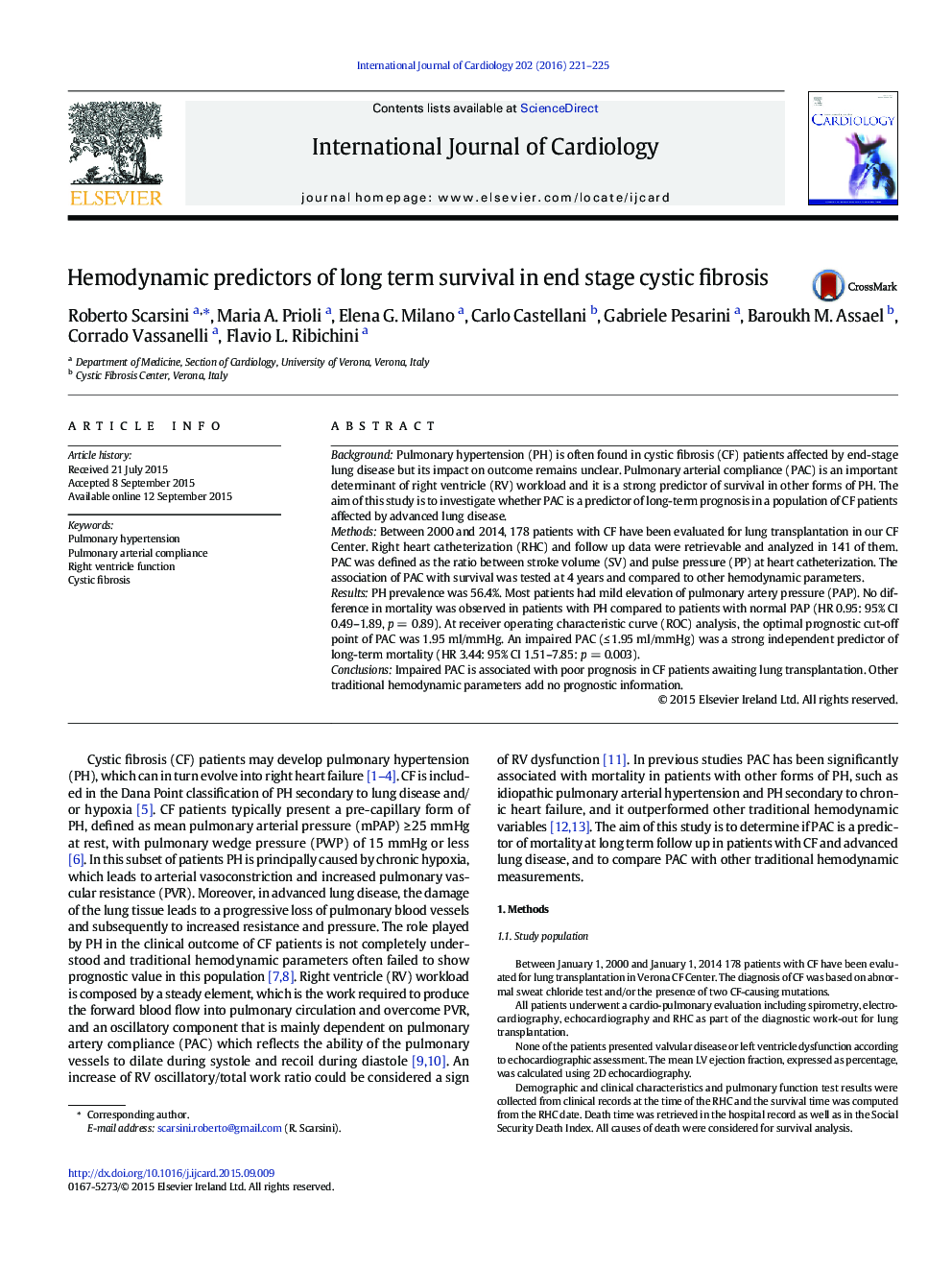| Article ID | Journal | Published Year | Pages | File Type |
|---|---|---|---|---|
| 5965359 | International Journal of Cardiology | 2016 | 5 Pages |
BackgroundPulmonary hypertension (PH) is often found in cystic fibrosis (CF) patients affected by end-stage lung disease but its impact on outcome remains unclear. Pulmonary arterial compliance (PAC) is an important determinant of right ventricle (RV) workload and it is a strong predictor of survival in other forms of PH. The aim of this study is to investigate whether PAC is a predictor of long-term prognosis in a population of CF patients affected by advanced lung disease.MethodsBetween 2000 and 2014, 178 patients with CF have been evaluated for lung transplantation in our CF Center. Right heart catheterization (RHC) and follow up data were retrievable and analyzed in 141 of them. PAC was defined as the ratio between stroke volume (SV) and pulse pressure (PP) at heart catheterization. The association of PAC with survival was tested at 4 years and compared to other hemodynamic parameters.ResultsPH prevalence was 56.4%. Most patients had mild elevation of pulmonary artery pressure (PAP). No difference in mortality was observed in patients with PH compared to patients with normal PAP (HR 0.95: 95% CI 0.49-1.89, p = 0.89). At receiver operating characteristic curve (ROC) analysis, the optimal prognostic cut-off point of PAC was 1.95 ml/mmHg. An impaired PAC (â¤Â 1.95 ml/mmHg) was a strong independent predictor of long-term mortality (HR 3.44: 95% CI 1.51-7.85: p = 0.003).ConclusionsImpaired PAC is associated with poor prognosis in CF patients awaiting lung transplantation. Other traditional hemodynamic parameters add no prognostic information.
